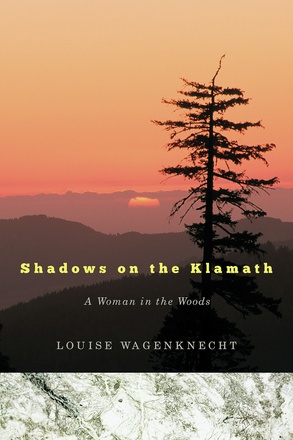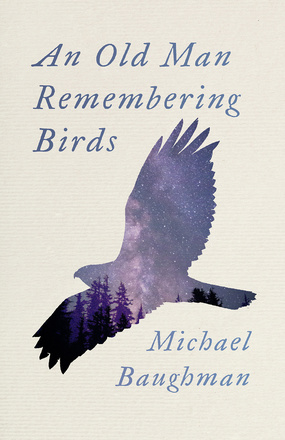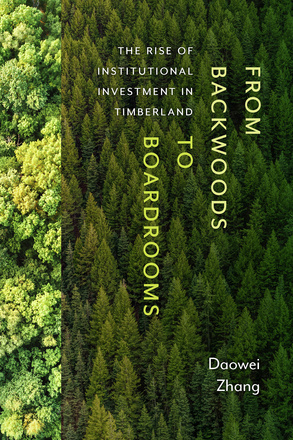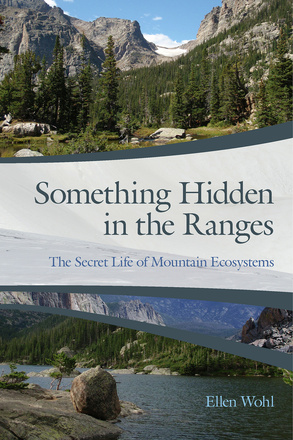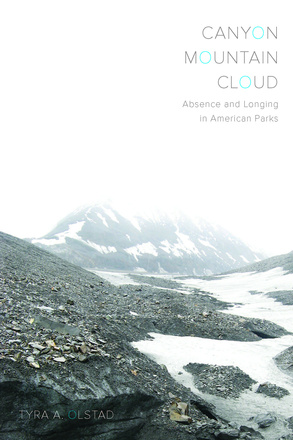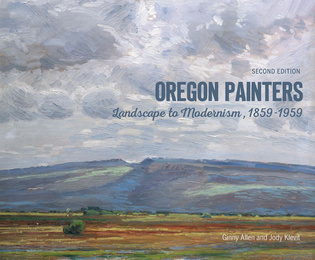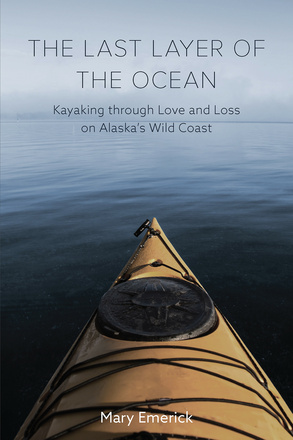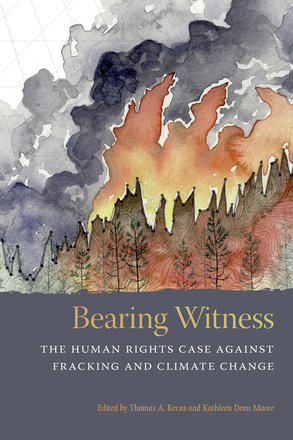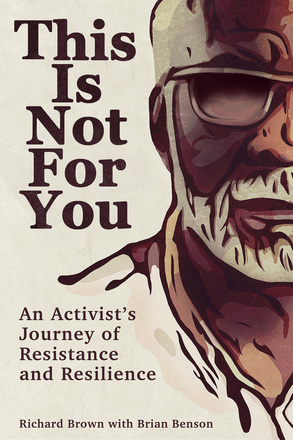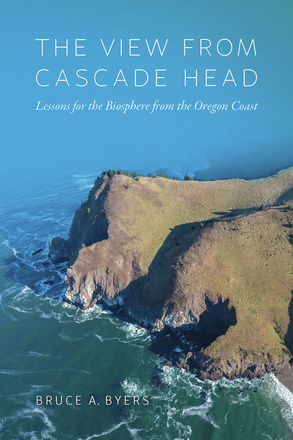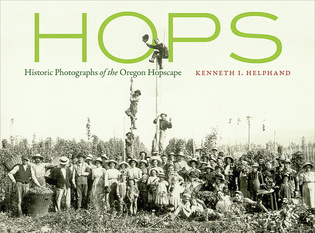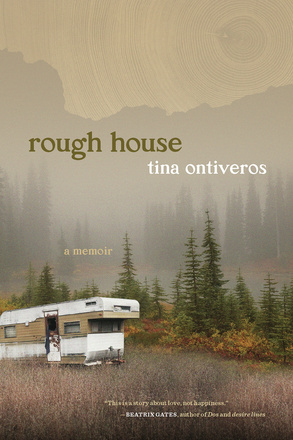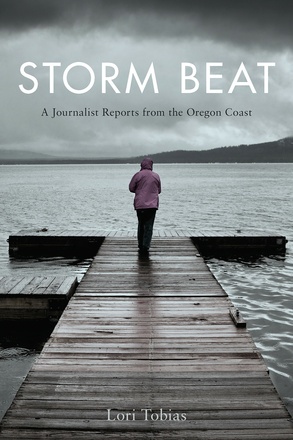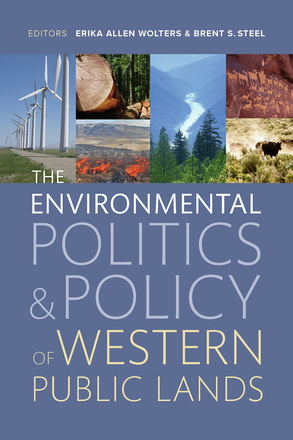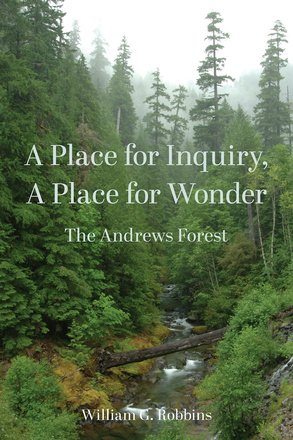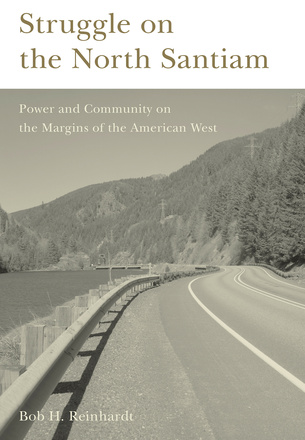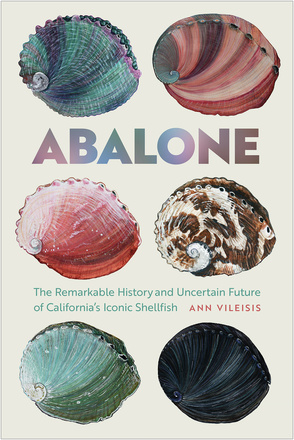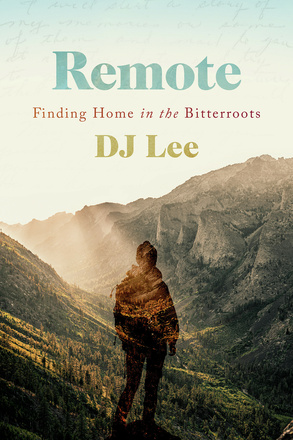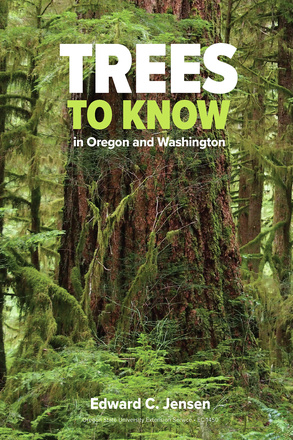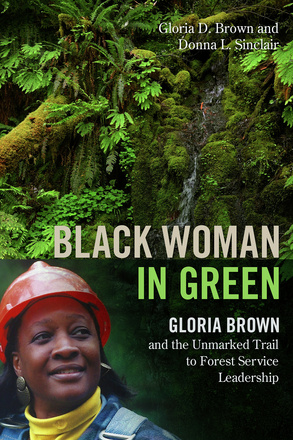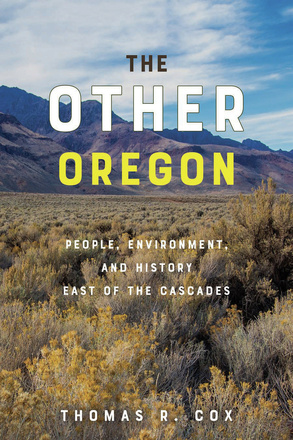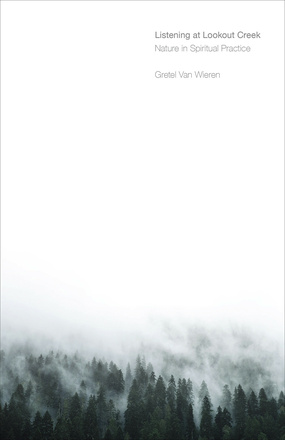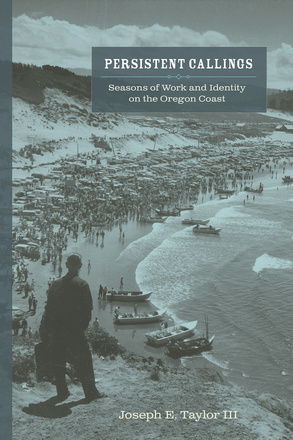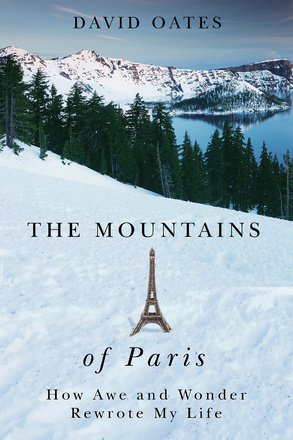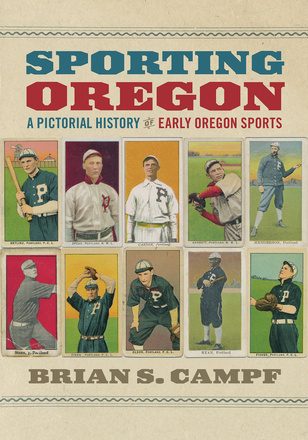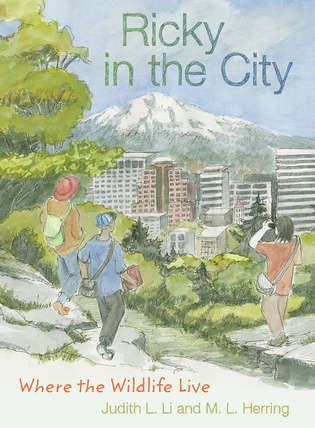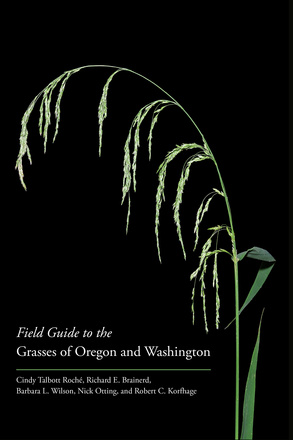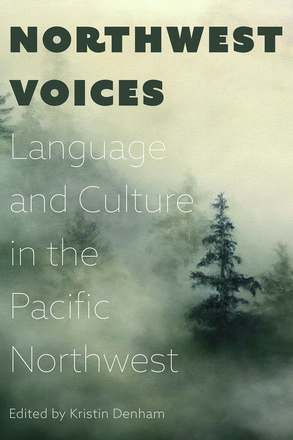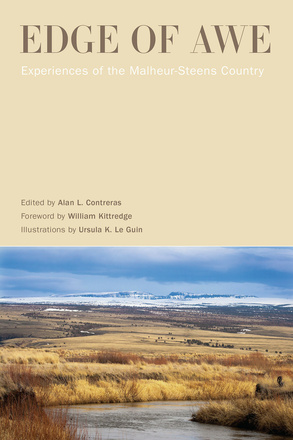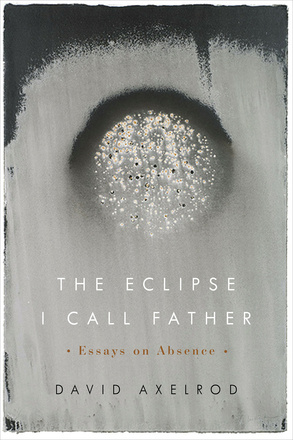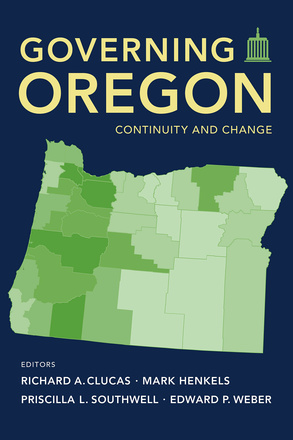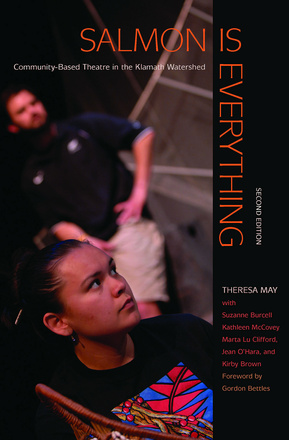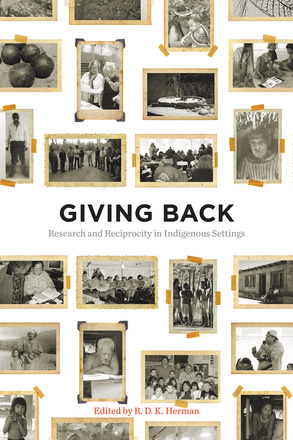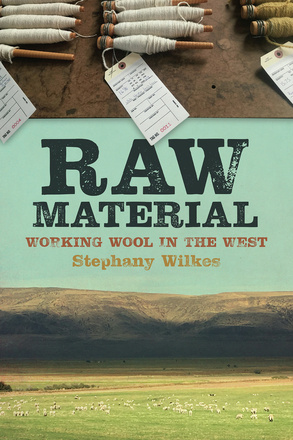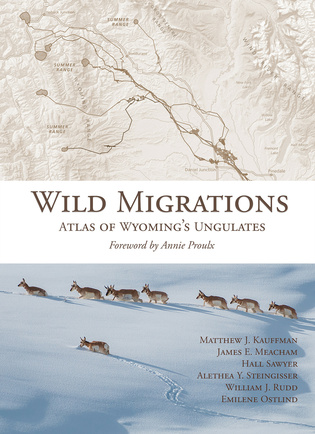Oregon State University Press
For fifty years, Oregon State University Press has been publishing exceptional books about the Pacific Northwest—its people and landscapes, its flora and fauna, its history and cultural heritage. The Press has played a vital role in the region’s literary life, providing readers with a better understanding of what it means to be an Oregonian. Today, Oregon State University Press publishes distinguished books in several academic areas from environmental history and natural resource management to indigenous studies.
Shadows on the Klamath
A Woman in the Woods
In 1973, Louise Wagenknecht was just another college graduate, but unlike many, she wanted to go home, back to the Klamath Mountains where she was raised. When a job offer from the Klamath National Forest gave her that chance, she jumped at it. She landed in the logging town of Happy Camp, where she’d spent part of her childhood, as chronicled in her previous memoirs, White Poplar, Black Locust and Light on the Devils.
With Shadows on the Klamath, Louise Wagenknecht completes her trilogy about life in remote northwestern California. In this new work, she recounts her years in the Forest Service, starting as a clerical worker on the Klamath National Forest before moving to a field position where she did everything from planting trees to fighting fires.
Her story is about a Forest Service in transition, as forest management practices began to shift. Not least among these changes was the presence of women in the ranks—a change that many in the Forest Service resisted. Wagenknecht blends the personal and professional to describe land management in the West and the people who do it—their friendships, rivalries, and rural communities.
Anyone with an interest in the Klamath-Siskiyou region, or the history of women in natural resource agencies, or the many issues associated with industrial forestry, should read this book for its valuable firsthand perspective. General readers interested in the rural West and personal memoir will also be richly rewarded.
An Old Man Remembering Birds
In a series of short, engaging essays, Michael Baughman reflects on his lifelong fascination with birds—on his deck in southern Oregon, at the end of a shotgun, on the beaches of Hawaii and Baja California.
Birders are dedicated and passionate, and, like anglers, they all have their stories. But Baughman tells more than simple accounts of birds spotted in the field. He reflects on human-animal relations, why humans seek closeness with nature, how a dedicated birder can also be a dedicated hunter. He explores how environmental change has altered the rhythms of bird life: the ospreys that resurged after DDT was banned, the waxwings and juncos that appear rarely now as climate change takes a toll on bird populations. Baughman also describes encounters with wildfires and smoke and discusses how they shape the landscape and wildlife of contemporary Oregon.
In his eighty-plus years around birds, Michael Baughman has learned one immutable lesson: as long as you remain alive and human, the closer you get to birds, and the more time you spend among them, the more you love them.
The Northwest Gardens of Lord and Schryver
Foreword by Bill Noble
Published in Cooperation with the Lord & Schryver Conservancy
Lord & Schryver, the first landscape architecture firm founded and operated by women in the Pacific Northwest, designed more than two hundred gardens in Oregon and Washington, including residential, civic, and institutional landscapes. Elizabeth Lord and Edith Schryver met as young women and in 1929 established their highly successful firm in Salem; their work is acknowledged as one of the milestones in the history of garden design in the Northwest and beyond. Theirs is the only Oregon firm recognized in Pioneers of Landscape Architecture, compiled by the National Park Service. The Cultural Landscape Foundation describes them as “consummate professionals in the broadest sense, as they worked to raise the profile of landscape architects by involving an audience beyond their clients. Their work represented a transition from a formal symmetrical style of garden design to one which responded in a distinctive way to the unique features of Northwest climate, soil, topography, and plant material.”
Gaiety Hollow, their purpose-built Salem home, garden, and studio, is now owned by the Lord & Schryver Conservancy and is open to the public. The conservancy has lovingly restored the gardens at Gaiety Hollow according to Lord & Schryver’s original plans. They have also restored and now maintain the gardens at Deepwood, a former residence that is now a public park.
Students of landscape architecture, garden design, Pacific Northwest history, ornamental horticulture, and general readers who are interested in the contributions of women to once male-dominated professions will find inspiration in these pages.
Learn more about Elizabeth Lord and Edith Schryver at www.lordschryver.org
From Backwoods to Boardrooms
The Rise of Institutional Investment in Timberland
Since the early 1900s, forestland ownership has gone through two major structural changes in the United States and other parts of the world: the accumulation of industrial timberlands between the 1900s and 1980s and, since then, the shift from industrial to institutional ownership. From Backwoods to Boardrooms explores the history and economics of these two structural changes with emphasis on the latter. These ownership transformations have impacted tens of millions of acres of private landholdings and billions of investment dollars. Industrial structure, forest management and policy, research and development, community welfare, and forest sustainability have all been directly affected.
Through a historical examination of key events and players, prevailing management philosophies, public policy, and institutional factors, Daowei Zhang searches for an economic explanation and assesses the impact of these ownership revolutions with a three-pronged approach. First, he explains why industrial firms were able to profit from owning forestlands, and how the shift to institutional ownership came about. Second, he compares private timberland investments and public equity investments with respect to risk-adjusted returns and other dimensions of interest to investors and forest managers, including alignment of interests, capacity to exploit market inefficiencies, and their forest management and conservation records. Finally, he provides thoughtful commentary on the future of institutional timberland investments and global forest sustainability.
From Backwoods to Boardrooms is essential reading for forest managers, investors, and anyone interested in understanding the workings of the modern forest sector and the future of forest sustainability.
A Voice for Justice
Writings of David Schuman
As an educator, speaker, deputy attorney general, and judge, David Schuman was known for his ability to clarify difficult legal concepts. According to James Egan, chief judge of the Oregon Court of Appeals, he was the “intellectual giant of our generation.” A Voice for Justice reveals how David Schuman’s unique jurisprudence came to be.
His friends and associates knew that Oregon Supreme Court Justice Hans Linde convinced Schuman to turn to the Oregon Constitution rather than the federal one to protect individual rights. But even some of Schuman’s closest friends were unaware of his fiction, which provides a window into his deep capacity for empathy and casts new light on his ability to write elegant, sometimes funny, judicial opinions. His legal thinking also had deep roots in literature and political theory.
Schuman’s 672 judicial opinions are not just brilliant, but written so that anyone can understand them. Like Ruth Bader Ginsburg, he knew there was nothing to gain by communicating only to specialists. He wanted citizens to be able to make up their own minds about important issues.
A Voice for Justice brings together for the first time writings that span over fifty years. Lawyers and laypeople alike will appreciate Schuman’s lucid, engaging observations, which are highly relevant to our current anxieties about institutional racism and democracy under stress. The short stories, speeches, op-eds, articles, legal opinions, and dissents selected for this volume constitute a call to action for everyone to become voices for justice.
Published in Cooperation with the University of Oregon's Wayne Morse Center for Law and Politics
I Have Not Loved You With My Whole Heart
I Have Not Loved You With My Whole Heart is a memoir of trauma, healing, faith, and violence. At its center is the author’s father, the Rev. Renne Harris, a heavy-handed, alcoholic Episcopal priest who came out in the height of the AIDS crisis and died of HIV in 1995.
In a book rich with remembrances of the Pacific Northwest of the 1970s–1990s, Cris Harris pulls the reader through turning points in a household crowded with abuse, addiction, neglect, acceptance, and grief, as well as the healing that comes after reconciliation. In recognizing perpetrators of violence as complex people—as selves we can recognize—Harris wrestles with paradox: the keening dissonance of loving people with hard edges, the humor of horrible situations, and how humor can cover for anger. He shows how violence can mark us and courageously lays bare those marks, owning them as his own precious history, born of a fierce species of love.
I Have Not Loved You With My Whole Heart will speak to readers whose family members came out late in life, and to those who lost loved ones in the AIDS crisis of the late 1980s and 1990s. Those with complicated relationships to faith, survivors of abuse, and anyone who has lived with family crisis will also find healing in these pages.
Something Hidden in the Ranges
The Secret Life of Mountain Ecosystems
We all see the largest features of mountain ecosystems—the impressively rugged peaks, the clear blue lakes, and the extensive forests—but each of these readily visible features depends on largely invisible creatures and flows of material and energy. Something Hidden in the Ranges draws on a wide array of scientific research to reveal the complex ecology of Rocky Mountain National Park in Colorado and, by extension, of mountain ecosystems generally.
Geologist Ellen Wohl has spent three decades investigating the streams and forests near her home in Colorado. In writing that is free from jargon and easy to understand, she tells the intricate story of how streams provide energy to adjacent forests, how lake sediments record the history of wind-blown pollutants, and how hidden networks of fungi keeps forests healthy. She guides readers through forests at both lower and higher elevations, revealing how trees rely on microbes in the soil, in the forest canopy, and even within individual pine needles to obtain the food they need. Other chapters focus on subalpine lakes, mountain streams, beaver meadows, and alpine tundra.
While scientists, students, and scholars will benefit from Wohl’s intimate knowledge of mountain ecosystems, Something Hidden in the Ranges is written for anyone interested in natural or environmental history. It will change the way readers perceive and think about natural landscapes.
Canyon, Mountain, Cloud
Absence and Longing in American Parks
What do we seek and what do we find when we visit parks and protected areas? What does it mean to become so deeply attached to a beautiful, wild place that it becomes part of one’s identity? And why does it matter if a particular landscape doesn’t speak to one’s soul?
Part memoir and part scholarly analysis of the psychological and societal dimensions of place-creation, Canyon, Mountain, Cloud details the author’s experiences working and living in Black Canyon of the Gunnison National Park, Denali National Park and Preserve, Adirondack State Park, and arctic Alaska. Along the way, Olstad explores canyons, climbs mountains, watches clouds, rafts rivers, searches for fossils, and protects rare and fragile vegetation. She learns and shares local natural and cultural histories, questions perceptions of “wilderness,” deepens her appreciation for wildness, and reshapes her understanding of self and self-in-place.
Anyone who has ever felt appreciation for wild places and who wants to think more deeply about individual and societal relationships with American parks and protected areas will find humor, fear, provocation, wonder, awe, and, above all, inspiration in these pages.
Oregon Painters
Landscape to Modernism, 1859-1959
The Last Layer of the Ocean
Kayaking through Love and Loss on Alaska's Wild Coast
There are five layers of the ocean, though most of us will only ever see one. The deepest layer is the midnight zone, where the only light comes from bioluminescence, created by animals who live there. In order to see, these creatures must create their own light. They move like solitary suns, encased in their own bubbles of freezing water. This is the most remote, unexplored zone on the planet. Though hostile to humans, it’s a source of rapt fascination for Mary Emerick, who would go there in a heartbeat if she could.
The year Emerick turned 38, the suicide of a stranger compelled her to uproot her life and strike out for Alaska, taking a chance on love and home. She learned how to travel in a small yellow kayak along the rugged coast, contending with gales, high seas, and bears. She pondered the different meanings of home from the perspectives of people who were born along Alaska’s coast, the first peoples who had been there for generations, newcomers who chose this place for themselves, and the many who would eventually, inevitably leave. When she married a man from another island, convinced that love would stick, she soon learned that marriage is just as difficult to navigate as the ocean.
Divided into sections detailing the main kayaking strokes, with each stroke serving as metaphor for the lives we all pass through and the tools needed to stay afloat, this eloquent memoir speaks to the human need for connection—connection to place and to our fellow travelers casting their bubbles of light in the depths.
On the Run
Finding the Trail Home
OCatherine Doucette is a backcountry skier, horseback rider, and mountaineer—roles that have resulted in adventures where she is often the only woman in a group of men. Starting from a young age, she pushed through the wilderness with her brothers, friends, and partners, gaining the skill and judgement to tackle progressively bigger goals until she became an accomplished outdoorswoman.
For over a decade, Doucette chased winter around the world to ski, from the White Mountains of her native New Hampshire to the slopes of Alaska, British Columbia, California, Argentina, Switzerland, and beyond. But she always kept one eye toward living a more settled life and putting her heart on the line if someone would just ask her to. Like other women who choose or yearn to be in the wilderness, she wrestled to reconcile her outdoor ambitions with society’s expectations of women.
The personal essays collected in On the Run touch on the author’s origins in New Hampshire while focusing on the lure of big mountains in the West. They celebrate the comfort, challenge, and community found in expanses of wilderness while confronting the limitations and sacrifices that come with a transient, outdoor lifestyle. In a voice both searching and deeply grounded, Doucette contends with avalanches and whitewater along with the less dramatic but equally important questions of belonging. Anyone who has searched to define home, who has been called by mountains, or by movement, will feel at home in these pages.
Bearing Witness
The Human Rights Case Against Fracking and Climate Change
Fracking, the practice of shattering underground rock to release oil and natural gas, is a major driver of climate change. The 300,000 fracking facilities in the US also directly harm the health and livelihoods of people in front-line communities, who are disproportionately poor and people of color. Impacted citizens have for years protested that their rights have been ignored.
On May 14, 2018, a respected international human-rights court, the Rome-based Permanent Peoples’ Tribunal, began a week-long hearing on the impacts of fracking and climate change on human and Earth rights. In its advisory opinion, the Tribunal ruled that fracking systematically violates substantive and procedural human rights; that governments are complicit in the rights violations; and that to protect human rights and the climate, the practice of fracking should be banned.
The case makes history. It revokes the social license of extreme-extraction industries by connecting environmental destruction to human-rights violations. It affirms that climate change, and the extraction techniques that fuel it, directly violate deeply and broadly accepted moral norms encoded in the Universal Declaration of Human Rights.
Bearing Witness maps a promising new direction in the ongoing struggle to protect the planet from climate chaos. It tells the story of this landmark case through carefully curated court materials, including searing eye-witness testimony, groundbreaking legal testimony, and the Tribunal’s advisory opinion. Essays by leading climate writers such as Winona LaDuke, Robin Wall Kimmerer, and Sandra Steingraber and legal experts such as John Knox, Mary Wood, and Anna Grear give context to the controversy. Framing essays by the editors, experts on climate ethics and human rights, demonstrate that a human-rights focus is a powerful, transformative new tool to address the climate crisis.
Touching This Leviathan
Touching This Leviathan asks how we might come to know the unknowable—in this case, whales, animals so large yet so elusive, revealing just a sliver of back, a glimpse of a fluke, or a split-second breach before diving away.
Whale books often sit within disciplinary silos. Touching This Leviathan starts a conversation among them. Drawing on biology, theology, natural history, literature, and writing studies, Peter Wayne Moe offers a deep dive into the alluring and impalpable mysteries of Earth’s largest mammal.
Entertaining, thought-provoking, and swimming with intelligence and wit, Touching is Leviathan is creative nonfiction that gestures toward science and literary criticism as it invites readers into the belly of the whale.
This Is Not For You
An Activist's Journey of Resistance and Resilience
This Is Not For You tells the story of activist and photographer Richard Brown, a Black Portlander who has spent decades working to bridge the divide between police and the Black community. His memoir brings readers with him into the streets with fellow activists, into squad cars with the rank-and-file, and to regular meetings with mayors and police chiefs. There are very few people doing the kind of work Richard Brown has done. And that, as he sees it, is a big problem.
The book finds Brown approaching his eightieth birthday and reflecting on his life. As he recalls his childhood in 1940s Harlem, his radicalization in the newly desegregated Air Force, and his decades of activism in one of America’s whitest cities, he questions how much longer he’ll do this work, and he wonders who, if anyone, will take his place.
This is a book about how and why to become an engaged, activist citizen, and how activists can stay grounded, no matter how deeply they immerse themselves in the work. It also offers an intimate, firsthand look at policing: what policing is and could be, how civilians can have a say, and how police can and should be responsive to and inclusive of civilian voices. This Is Not For You speaks on every page about being Black in America: about Black pride; Black history, art, and culture; and the experience of resisting white supremacy. It also stands as a much-needed counternarrative to Portlandia, telling a different story about the city and who has shaped it.
Over fifty percent of royalties earned on this book will be donated to organizations working on behalf of Black Portlanders.
The View From Cascade Head
Lessons for the Biosphere from the Oregon Coast
Hops
Historic Photographs of the Oregon Hopscape
The craft brewing renaissance of recent decades has brought a renewed interest in hops. These vigorous vines, with their flavorful flowers, have long played a key role in beer making and in Oregon’s agricultural landscape. This compendium of photographs offers a visual dive into the distinctive physical presence of hops in the state. From pickers and poles to cones and oasts, Kenneth I. Helphand brings the landscape and culture of hops to life.
Storm Beat
A Journalist Reports from the Oregon Coast
Clifford Gleason
The Promise of Paint
Clifford Gleason: The Promise of Paint serves as both an introduction and a definitive study of an “artist’s artist,” who until now has not received the sustained attention that he and his work are due. It traces his career from the 1930s until the last months of his difficult life—difficult because of alcoholism, near poverty, and homosexuality in a repressive era. In paint, Gleason found the only realm in which he felt competent, confident, and successful; paint offered the promise of accomplishment. Published in conjunction with an exhibition at the Hallie Ford Museum of Art at Willamette University, this richly illustrated monograph examines Gleason’s identity as a modern artist as he responded to the rapid changes in artistic modernism from the late 1930s, when he studied with Louis Bunce at the Salem Federal Art Center, to the 1970s, when he rethought the legacy of Abstract Expressionism in works that are unique to him, visually beautiful and poetically expressive.
The Environmental Politics and Policy of Western Public Lands
Editors Erika Allen Wolters and Brent Steel have assembled a stellar cast of scholars to consider long-standing issues and topics such as endangered species, land use, and water management while addressing more recent challenges to western public lands like renewable energy siting, fracking, Native American sovereignty, climate change, and land use rebellions.
A Place for Inquiry, A Place for Wonder
The Andrews Forest
The H.J. Andrews Experimental Forest is a slice of classic Oregon: due east of Eugene in the Cascade Mountains, it comprises 15,800 acres of the Lookout Creek watershed. The landscape is steep, with hills and deep valleys and cold, fast-running streams. The densely forested landscape includes cedar, hemlock, and moss-draped Douglas fir trees. One of eighty-one USDA experimental forests, the Andrews is administered cooperatively by the US Forest Service, OSU, and the Willamette National Forest. While many Oregonians may think of the Andrews simply as a good place to hike, research on the forest has been internationally acclaimed, has influenced Forest management, and contributed to our understanding of healthy forests.
In A Place for Inquiry, A Place for Wonder, historian William Robbins turns his attention to the long-overlooked Andrews Forest and argues for its importance to environmental science and policy. From its founding in 1948, the experimental forest has been the site of wide-ranging research. Beginning with postwar studies on the conversion of old-growth timber to fast-growing young stands, research at the Andrews shifted in the next few decades to long-term ecosystem investigations that focus on climate, streamflow, water quality, vegetation succession, biogeochemical cycling, and effects of forest management. The Andrews has thus been at the center of a dramatic shift in federal timber practices from industrial, intensive forest management policies to strategies emphasizing biodiversity and healthy ecosystems.
Struggle on the North Santiam
Power and Community on the Margins of the American West
A history or Oregon's North Santiam Canyon, from interaction between Native and non-Native peoples and railroad development and land fraud in the nineteenth century, to changing fortunes in the timber industry and questions about economic and environmental sustainability into the twenty-first century.
Abalone
The Remarkable History and Uncertain Future of California's Iconic Shellfish
Explores the natural history of the abalone and its imperiled future, focusing on a mix of issues, from the simple and expected (over-harvesting) to the more complex (fundamental scientific misunderstandings).
Collected Poems of Hazel Hall, The
During the short span of her career, Hazel Hall became one of the West's outstanding literary figures, a poet whose fierce, crystalline verse was frequently compared with that of Emily Dickinson. Confined to a wheelchair since childhood, Hall's writings convey the dark undertones of the lives of working women in the early twentieth century, while bringing into focus her own private, reclusive life—her limited mobility, her isolation and loneliness, and her gifts with needlework and words.
The Collected Poems of Ada Hastings Hedges
Ada Hastings Hedges was one of Oregon’s foremost poets of the mid-twentieth century. This book brings together her known poems, including a complete annotated reprint of her famous “Desert Poems” of 1930.
Facing the World
Defense Spending and International Trade in the Pacific Northwest Since World War II
An examination of select federal and state-level politicians in the Pacific Northwest in the post-World War II era, "Facing the World" contends that individuals, including Henry Jackson, Tom Foley, Mark Hatfield, and Vic Atiyeh, working with local partners, secured the economic expansion of the Pacific Northwest through greater global outreach and embrace of the federal national security doctrine that took hold during the Cold War.
Trees to Know in Oregon and Washington
For 70 years, people have turned to one book to learn about Northwest trees: Trees to Know in Oregon. This new edition, retitled Trees to Know in Oregon and Washington, expands its scope to cover more territory and include more trees.
The book was first published in 1950. Charles R. Ross, an Oregon State University Extension forester, wanted to introduce readers to the towering giants in their backyards. Since then, Edward C. Jensen has stewarded the publication through several more editions. This edition features several rare species native to southwest Oregon. It also updates scientific names and adds a new section on how Northwest forests are likely to be affected by changing climates.
Since its initial publication, Trees to Know has become a mainstay for students, gardeners, small woodland owners and visitors to the Pacific Northwest. Along with all the details on native conifers, broadleaves, and more than 50 ornamental trees, readers will find:
- More than 400 full-color photos and 70 maps depicting habitat, range and forest type.
- Easy-to-follow identification keys.
- Handy guides to help distinguish one variety from another.
- The story of Northwest forests — past, present and future.
Black Woman in Green
Gloria Brown and the Unmarked Trail to Forest Service Leadership
An urban African American woman rises from secretary to leader in the USDA Forest Service of the twentieth century West. Along the way, she faces personal and agency challenges to become the first black female forest supervisor in the United States.

